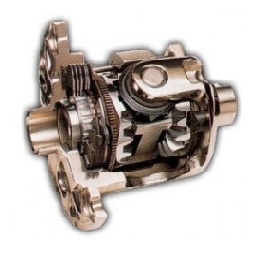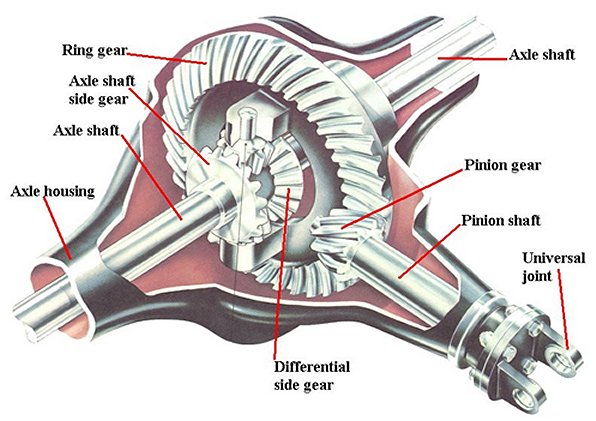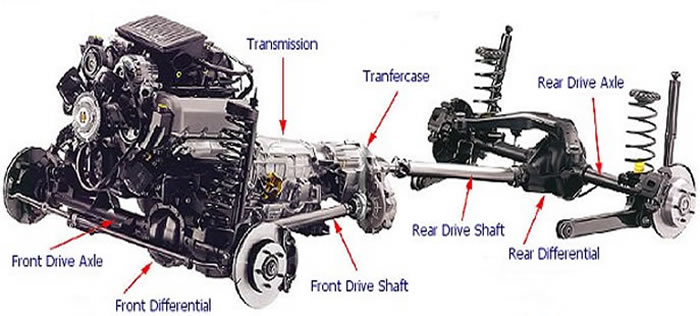Differentials & Transfer Cases
 |
Differentials and transfer cases are essential components for the proper handling and drivability of your vehicle.
A vehicle’s wheels must be able to rotate at different speeds (mainly when turning corners). The differential is designed to drive a pair of wheels while allowing them to rotate at different speeds according to driving conditions.
In vehicles without a differential, such as karts, both driving wheels are forced to rotate at the same speed. When rounding a corner, the inner wheel must travel a shorter distance than the outer wheel, so with no differential, the result is the inner wheel spinning and/or the outer wheel dragging. This can cause difficult and unpredictable handling, damage to tires and roads, and strain on (or possible failure of) the entire drivetrain.
The transfer case works by transferring power to the front and rear axles from the vehicle’s transmission. In some cases, it can act similarly to the way a differential does, allowing the front and rear tires to rotate at different speeds. As well, the transfer case is what allows a vehicle to be shifted into four-wheel-drive and two-wheel-drive mode. Optimal performance of differentials and transfer cases depends on proper maintenance and repair. Our expert technicians will ensure that you are highly satisfied with your vehicle’s operation in this regard.
How it works
Without a differential system a vehicle is unable to handle properly when traveling around corners, curves or turning at all. All vehicles except for motorcycles must include a differential system. The primary purpose of the differential system is to evenly distribute force to one wheel or the other depending on the drag. Both wheels will have the same force when the drag is equal. When a vehicle is in a corner the outside wheels travel further than the inside wheels, creating a problem. If all four wheels are forced to travel the same distance the vehicle will jump and skid, the differential corrects this problem. On non drive axles no differential system is needed.
 |
Front or Rear Differential Configuration |
A differential is driven by the transmission which is connected to the engine. The driveshaft connects the transmission to the differential. The differential is responsible for determining the number of rotations the axles will turn in relation to the drive shaft, a common Ratio is 2:80, the drive shaft will turn 2.8 times to one rotation of the wheel. A differential system consists of an axle housing, axles, gears, planetary gears, bearing, seals, and fluid, backing plates, brakes, assorted bolts and clips.
 |
All Wheel Drive Example (appearance may vary) |
Smooth working helical gears are used in a differential, but a slight power loss is experienced. A Straight cut gear is more efficient but smooth operation is impossible to achieve.
Service
As a normal service practice it is necessary to check the differential fluid level and add as needed. Always inspect fluid condition for metallic flakes, an indication of a problem. It is advisable to only add only the best quality differential fluid, to ensure the proper lubrication of all moving parts. In the event that you start hearing a grinding noise coming from the rear of the vehicle, it is vitally important to inspect the differential thoroughly.
